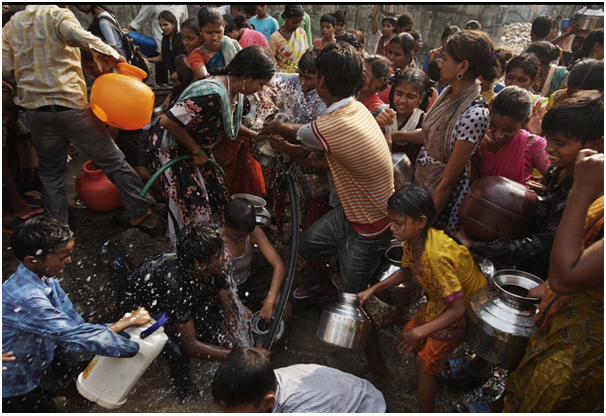Rural-Urban Water Transfer- From Lose-Lose to Win-Win
Context: It is estimated that the urban population component in India will cross the 40% mark by 2030 and the 50% mark by 2050 (World Urbanization Prospects, 2018).
Water use in the urban sector has increased as more and more people shift to urban areas, and per capita use of water in these centres rises, which will continue to grow with improved standards of living.
More on the topic
- Whatever be the source, surface or groundwater, cities largely depend on rural areas for raw water supply which has the potential to ignite the rural-urban dispute.
- Available studies covering Nagpur and Chennai indicate the imminent problem of rural-urban water disputes that the country might face in the not-so-distant future as water scarcity grows, which will be further exacerbated by climate change.
- At present, the rural-urban transfer of water is a lose-lose situation in India as water is transported at the expense of rural areas and the agricultural sector
- In cities, most of this water is in the form of grey water with little recovery or reuse, eventually contributing to water pollution.
What can be done to solve the issue
- A system perspective and catchment scale-based approach are necessary to link reallocation of water with wider discussions on development, infrastructure investment, fostering a rural-urban partnership and adopting an integrated approach in water management.
- Institutional strengthening can offer entry points and provide opportunities to build flexibility in water resource allocation at a regional level, enabling adjustments in rapidly urbanizing regions.
Understanding India’s water crisis through Statistics
- UNESCO United Nations World Water Development Report of 2022
- The report encapsulated global concern over the sharp rise in freshwater withdrawal from streams, lakes, aquifers and human-made reservoirs, impending water stress and also water scarcity being experienced in different parts of the world.
- The new Water Report of the Food and Agriculture Organization of the United Nations (FAO) sounded a note of caution about this silent crisis of a global dimension, with millions of people being deprived of water to live and to sustain their livelihood.
- The Water Scarcity Clock shows that over two billion people live in countries now experiencing high water stress; the numbers will continue to increase.
- The Global Drought Risk and Water Stress map (2019) shows that major parts of India, particularly west, central and parts of peninsular India are highly water stressed and experience water scarcity.
- A NITI Aayog report, ‘Composite Water Management Index’ (2018) has sounded a note of caution about the worst water crisis in the country, with more than 600 million people facing acute water shortages.
- UN report on ‘Transboundary Waters Systems – Status and Trend’ (2016)
- The report identified risks associated with water transfer in three categories of biophysical, socio-economic and governance. South Asia, including India, falls in the category of high biophysical and the highest socio-economic risks.
| Practice Question
1. As the water crisis is increasingly intensified with an increasing year, what steps should be taken to subside its impact to minimum? |




